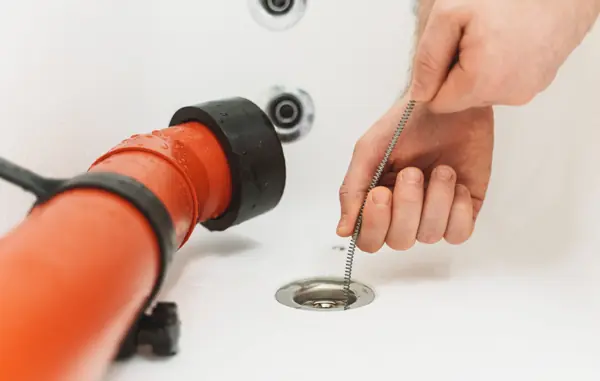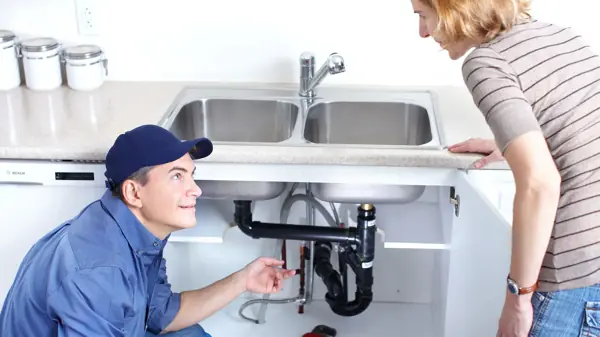Proper sink installation is a game-changer for your kitchen’s plumbing health. Think about it: the sink is one of the most frequently used fixtures in your home. From preparing meals to cleaning up, a lot hinges on its performance. But it’s not just about avoiding leaks; correct installation ensures everything flows smoothly—literally.
When your sink is properly installed, it prevents clogs and backups, which are more than just nuisances; they can lead to serious plumbing disasters if left unchecked. Plus, a well-installed sink supports better water pressure and efficient drainage, making your kitchen more functional and hygienic.
Whether you’re renovating or just updating your kitchen, understanding the importance of expert sink installation can save you from future headaches and keep your kitchen running efficiently. So, let’s dive into why this often-overlooked aspect is so critical for your kitchen’s overall health.
How does incorrect sink installation affect kitchen plumbing?
Incorrect sink installation can significantly affect kitchen plumbing in several detrimental ways:
- Leaks: Leaks can result from poorly sealed sink-to-plumbing fixture connections. These leaks may occur at the faucet, drain, or sink plumbing. Even small leaks can cause water damage to cabinets, counters, and the subfloor, which can be costly.
- Poor Drainage: Sink alignment and plumbing configuration might cause slow drainage or stagnant water. Bacteria and odors can grow, making the kitchen unsanitary.
- Increased Risk of Clogs: Poor pipe installation, such as slopes or curves under the sink, can reduce water flow and cause clogs. Debris and waste in poorly constructed pipes can clog plumbing, requiring more frequent maintenance and possibly professional intervention.
- Structural Damage: Leak-induced moisture can degrade neighboring structures. Wood and metal fixtures can rot and corrode, causing significant damage beyond plumbing.
- Increased Maintenance Costs: Incorrect installation causes leaks, blockages, and poor drainage, requiring more frequent repairs and maintenance. This increases plumbing system maintenance expenses and shortens its lifespan.
- Impact on Water Pressure: Misinstallation can also lower kitchen water pressure. Incorrect pipe sizing or routing can restrict water flow, harming sinks and other linked appliances like dishwashers.
Therefore, ensuring correct installation by a qualified professional is crucial to maintaining the functionality and efficiency of kitchen plumbing and avoiding potential long-term problems and expenses.
What are common plumbing issues caused by sink installation errors?
Common plumbing issues caused by errors during sink installation can range from minor annoyances to major problems that require extensive repairs. Here are some typical issues that can arise:
- Leaks: Faulty sink installation is a common cause of leaks. These can happen at the faucet, drain, or sink-water supply line connections. Poor sealing or component fitting can produce repeated leaking or leakage, which can cause water damage.
- Poor Drainage: The sink may back up or drain slowly if it is not aligned with the plumbing or has the wrong drain gradient. This delays kitchen operations and increases blockage danger.
- Clogged Pipes: Incorrectly installed or aligned pipes can promote clogging. For instance, if the trap under the sink (the P-trap) needs to be installed correctly, it can trap debris more frequently, leading to blockages that impede water flow.
- Water Pressure Problems: Mistakes in the installation process can reduce water pressure at the sink. If the supply lines are kinked, undersized, or improperly connected, they may not deliver water at the necessary pressure.
- Water Damage: Water damage from badly fitted sinks can ruin cabinets, counters, and flooring. Moisture can also cause mold and mildew growth, which can cause health hazards and harm.
- Noise Issues: Improper installation can cause unusual noises, such as banging pipes (water hammer), gurgling, or whistling sounds when the sink is in use. These noises are annoying and can indicate problems that may worsen over time.
Addressing these issues typically requires correcting the installation errors, which involve replacing faulty components, resealing connections, or realigning the plumbing. Given these issues’ complexity and potential severity, it’s often best to hire a professional plumber to ensure that any corrections are made accurately and safely.
How can proper sink installation improve kitchen plumbing longevity?
Proper sink installation is critical for enhancing the longevity of kitchen plumbing by ensuring that all components work efficiently and harmoniously. Here’s how correct installation makes a significant difference:
- Prevents Leaks: Correctly securing all fittings and connections prevents leaks around the faucet base, under the sink at pipe joints, and at supply line connections. Leaks waste water and expose cabinetry and underlying components to dampness, which can rot and mildew.
- Ensures Efficient Drainage: The right plumbing installation and alignment improve drainage. The sink, P-trap, and drain lines should be appropriately positioned to provide smooth water flow, eliminate standing water, and prevent clogs. Efficient drainage reduces pipe strain.
- Avoids Structural Damage: Proper installation helps avoid unnecessary stress on pipes and fixtures. When a sink is securely installed and supported, it minimizes the risk of damage due to weight or usage stress, preserving the integrity of the plumbing fixtures.
- Reduces Maintenance and Repair Costs: When properly installed, the plumbing system needs fewer repairs and adjustments. Maintenance expenditures and plumbing disruptions are reduced. Without high pressure or clogs, well-maintained plumbing is quieter.
- Improves Hygiene and Cleanliness: Well-installed sinks drain better and are easier to clean. This decreases water pooling, mold, and bacterium growth in damp settings. Kitchen hygiene is essential for a healthy lifestyle.
- Enhances Component Lifespan: When each sink component, from the faucet to the drain pipes, is installed correctly, it operates within its intended parameters and experiences less wear and tear. This optimal operation extends the lifespan of the entire plumbing system.
Professional and precise sink installation is an investment in the long-term functionality and durability of kitchen plumbing. It ensures the plumbing system meets current needs and remains robust and efficient for years.
What role does sink placement play in overall kitchen plumbing efficiency?
Sink placement is crucial in determining the overall efficiency and functionality of kitchen plumbing for several reasons:
- Optimal Workflow: Sink placement is important in kitchen design, especially the “kitchen work triangle” (stove, refrigerator, and sink)—a well-placed sink streamlines meal preparation and cleanup by reducing unnecessary movements.
- Ease of Connection to Plumbing Infrastructure: Strategic sink placement simplifies and directs water supply and drainage connections. A well-positioned sink requires less pipe, reducing leakage and installation costs. Direct lines improve water pressure and drainage.
- Space Utilization and Access: Proper sink placement maximizes kitchen space and improves accessibility and functionality. It allows cabinet doors and dishwasher openings, making the kitchen more organized and functional.
- Prevention of Plumbing Problems: Clogs and backflows can be avoided by placing the sink near simple plumbing runs. Long or intricate pipes can cause sediment buildup and obstructions, reducing system efficiency.
- Impact on Maintenance and Repairs: Maintenance and repair are easier with an optimum sink plumbing layout. Accessible plumbing makes routine checkups, leak repairs, and blockage removal easier without disassembling the kitchen.
- Energy and Water Efficiency: Sink location can save energy and water. For instance, placing the sink near the dishwasher allows both to use the same hot water source, saving time and energy.
The strategic placement of a sink within a kitchen layout enhances the space’s functionality and aesthetics and promotes a more efficient, cost-effective, and easy-to-maintain plumbing system.




